Bus Stop Improvements Making an Impact
Metro is investing in a series of bus stop improvements across the region that will improve the rider experience and fully comply with the Americans with Disabilities Act (ADA).
Metro is investing in bus stop improvements to make bus riding easier for everyone, but especially for persons with disabilities. Improvements have been completed along two routes; the J4 route (College Park- Bethesda MetroExtra) and the P12 (Eastover-Addison Road Station). Addtional work was also done in the City of Greenbelt. These stops were selected as a part of the regional TIGER grant bus priority initiative designed to improve bus speeds and customer facilities along high demand corridors throughout the region.
To meet ADA requirements, bus stops must have four attributes:
At some locations, Metro was able to provide additional improvements, such as shelters, and in-street concrete pads, which are better able to withstand the heat and weight of a bus than regular asphalt. The specific improvements are described
below.
J4 corridor:
East West Highway and Grubb Road, eastbound and westbound, J1, J2, J3, J4, RideOn 11: In both directions, new concrete landing pads were built.
East West Highway and Connecticut Avenue, eastbound, J2, J3, J4: New ADA compliant pad was installed.
East West Highway and Pearl Street, westbound, J2, J3, J4: The sidewalk was widened and a retaining wall built to provide a 5×8 ADA-compliant landing pad.
- East West Highway and Grubb Road, eastbound, Before
- East West Highway and Grubb Road, eastbound, After
- East West Highway and Grubb Road, westbound, Before
- East West Highway and Grubb Road, westbound, After
- East West Highway and Connecticut Avenue, eastbound, Before
- East West Highway and Connecticut Avenue, eastbound, After
- East West Highway, westbound, at Pearl Street, Before
- East West Highway, westbound, at Pearl Street, After
P12 corridor:
Indian Head Highway and Southern Avenue, southbound, D12, D13, D14, P17, P18, P19, W13, W14 W15, W19: Replaced sidewalks, curb ramps, and concrete pad under the shelter. The shelter was moved back from the curb to provide additional passenger waiting space.
Audrey Lane and Indian Head Highway, eastbound, D12, D14, P12: A new larger concrete pad was poured, and the bench was replaced with a shelter.
Audrey Lane and Indian Head Highway, westbound, D12, D14, P12: A new larger concrete pad was poured, and an in-street concrete pad was poured.
Deal Street and Kennebec Street, southbound, D12, D14: The existing bulb-out was squared, and concrete poured, so both doors on the bus would be at the curb, and passengers can exit onto a firm surface.
Kennebec Street and Deal Street, westbound, D12, D14, P12: A new concrete pad was poured so passengers can exit onto a firm surface from either door, an in-street concrete pad was poured, and a new shelter was installed.
Iverson Street and Iverson Mall, eastbound and westbound, C12, P12, TheBus 32: Cracked sidewalk was replaced, new ADA compliant curb ramps were poured, older wooden benches (one on each side) were replaced with new metal benches, (three on each side), and new garbage cans were installed.
Branch Avenue and Silver Hill Road, northbound, C14, H13: A new concrete pad was poured so passengers can exit onto a firm surface from either door, and a new shelter was installed.
- Indian Head Highway and Southern Avenue southbound, Before
- Indian Head Highway and Southern Avenue southbound, After
- Audrey Lane and Indian Head Hwy eastbound, Before
- Audrey Lane and Indian Head Hwy eastbound, After
- Audrey Lane and Indian Head Hwy westbound, Before
- Audrey Lane and Indian Head Hwy westbound, After
- Deal Street and Kennebec Street, Before
- Deal Street and Kennebec Street, After
- Kennebec Street and Deal Street, Before
- Kennebec Street and Deal Street, After
- Iverson Street and Iverson Mall westbound, Before
- Iverson Street and Iverson Mall eastbound, Before
- Iverson Street at Iverson Mall eastbound, After
- Branch Ave and Silver Hill Rd, Before
- Branch Ave and Silver Hill Rd, After
City of Greenbelt:
In the City of Greenbelt, the pair of stops at the Roosevelt Center were improved.
Crescent and Gardenway, northbound and southbound, G12 G13 G14 G16, TheBus 11 (PDF): Installed new sidewalk the length of two buses (northbound), poured in-street concrete pad (northbound), replaced 30 year old shelters, replaced curb ramps, and painted crosswalks.
Note: Most of the “Before” photos are from Google Maps, while the “After” photos are by the author.
Future Improvements
Metro is currently working with its jurisdictional partners on other rounds of TIGER-funded bus stop improvements, including:
- Physical improvements to bus stops on 16th Street NW and Georgia Avenue NW
- Addition of real-time customer information displays to bus shelters across the region
- Leesburg Pike Transit Signal Priority
- Pentagon and Franconia-Springfield Metrorail Station Improvements

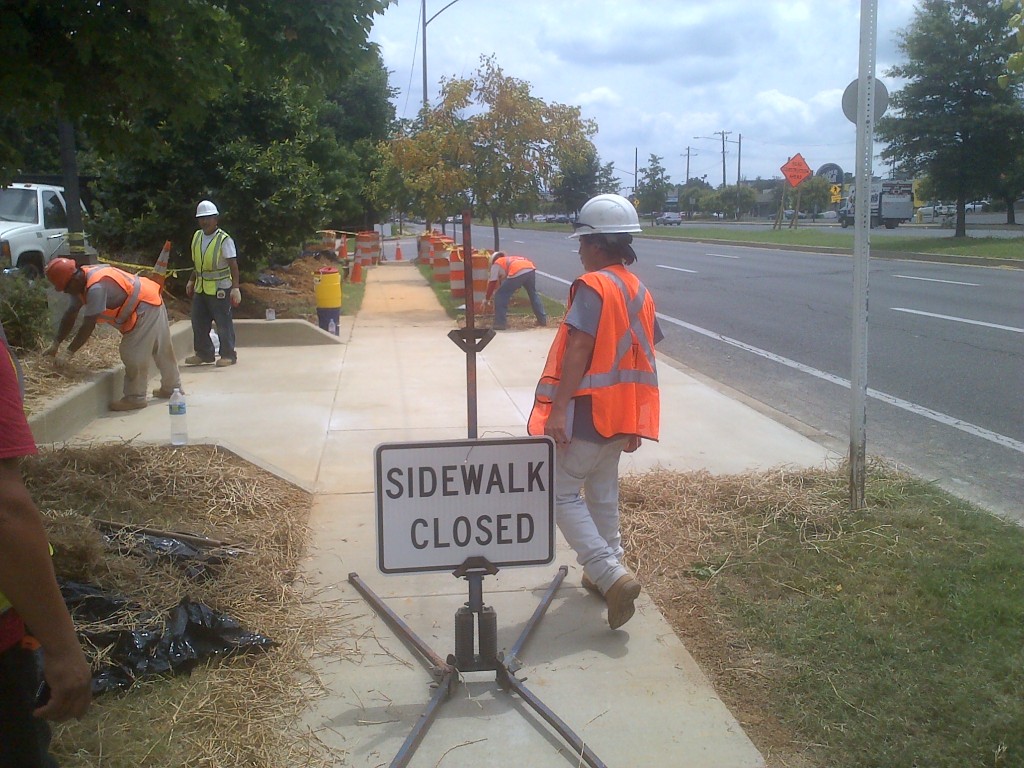
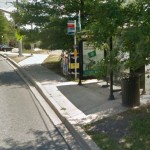
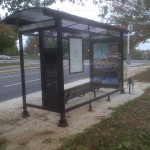
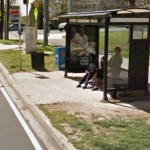
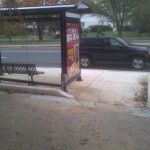
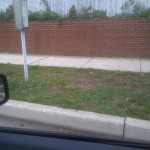
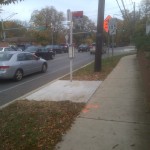
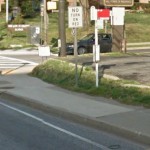
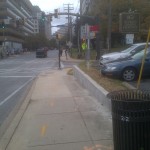
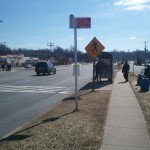
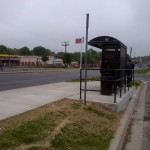
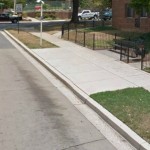
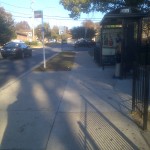
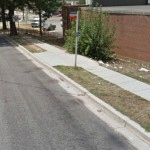
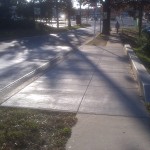
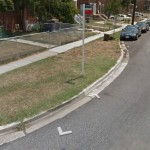
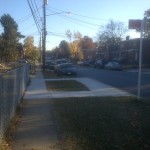
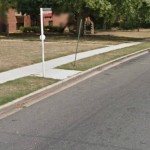
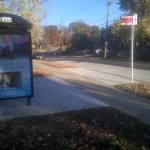
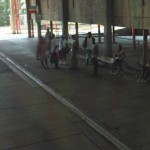
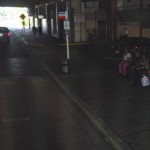
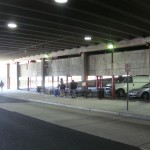
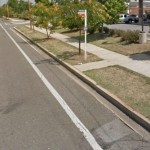
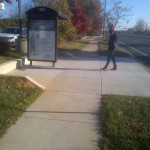
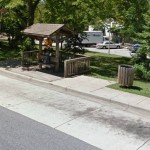
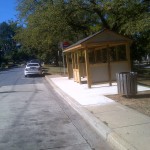
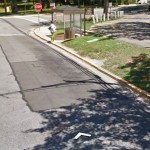
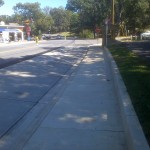

So, is the issue 50/50 the heat and weight, or 90% the weight of buses damaging asphalt? For instance, the busy stop at 14th and K heading northbound is in horrible shape and desperately in need of a concrete pad (not sure if that’s DDOT’s job, though) like the surrounding stops.
@JDC
I couldn’t give you a precise number, but it is a combination of the weight and heat.
Any streets that metrobus runs on is the responsibility of the jurisdiction, which in this case is DDOT, as you said.
I can pass this information onto DDOT and see if they can investigate and repair this issue.
In the future, you can also submit these kind of things to DDOT using the see click fix app, http://en.seeclickfix.com/washington